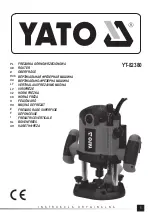
Chapter 8. Advanced Settings (Part 2)
|
133
N300 Wireless Dual Band ADSL2+ Modem Router DGND3300v2 User Manual
The previous figure shows a sample network using multiple networking technologies. In this
network, the two PCs with Gigabit (1000 Mbps) Ethernet adapters have a gigabit connection
through the GS605 switch to the storage server. This connection should allow for extremely
fast backups or quick access to large files on the server. The PC connected through a pair of
Powerline HD adapters is limited to the 200 Mbps speed of the Powerline HD connection.
Although any of the links in this example would be sufficient for high-traffic applications such
as streaming HD video, the use of older devices such as 10 Mbps Ethernet or 802.11b
wireless would create a significant bottleneck.
Optimizing Wireless Performance
The speed and operating distance or range of your wireless connection can vary significantly
based on the physical placement of the wireless router. You should choose a location for your
router that will maximize the network speed.
Note:
Failure to follow these guidelines can result in significant
performance degradation or inability to wirelessly connect to the
router. For complete range and performance specifications, click the
link to the online document
Wireless Networking Basics
in
Appendix
E.
The following list describes how to optimize wireless router performance.
•
Identify critical wireless links.
If your network has several wireless devices, decide which wireless devices need the
highest data rate, and locate the router near them. Many wireless products have
automatic data-rate fallback, which allows increased distances without loss of
connectivity. This also means that devices that are farther away might be slower.
Therefore, the most critical links in your network are those where the traffic is high and
the distances are great. Optimize those first.
•
Choose placement carefully.
For best results, place your router:
-
Near the center of the area in which your computers will operate.
-
In an elevated location such as a high shelf where the wirelessly connected
computers have line-of-sight access (even if through walls).
-
Avoid obstacles to wireless signals.
-
Keep wireless devices at least 2 feet from large metal fixtures such as file cabinets,
refrigerators, pipes, metal ceilings, reinforced concrete, and metal partitions.
-
Keep away from large amounts of water such as fish tanks and water coolers.
•
Reduce interference.
-
Avoid windows unless communicating between buildings.
















































